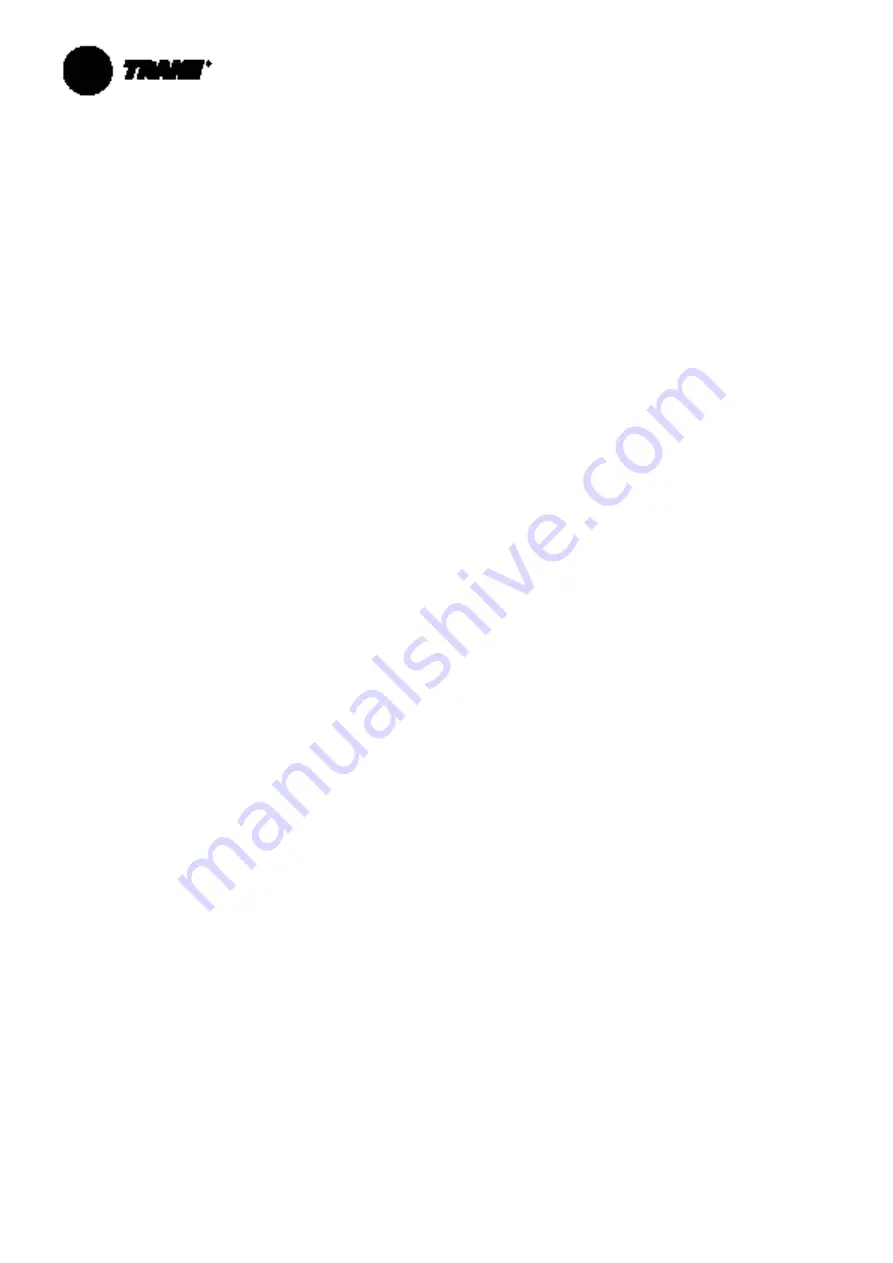
RLC-SVX19J_SHORT-GB
10
Chilled Water Piping Recommendations
Water Treatment
In the evaporator the following material are in contact
with water:
•
Water boxes are made of cast iron (GJL250 EN-code)
•
Tube plates are made of steel (P265GH code)
•
Tubes are made of copper
•
Turbulators when present in evaporator tubes are
made of phosphorous brass.
When the unit is supplied with hydraulic module, the
following additional materials are in contact with water:
•
Pump frame and connections are made of cast iron
•
Water pipes are made of iron
•
Pipe sealings are made of EPDM rubber (ethylene
propylene diene monomer rubber)
•
Pump sealings are made of silicon carbide
•
Strainer is made of stainless steel
Notice!
Dirt, scale, products of corrosion, and other foreign
material will adversely affect heat transfer between the
water and system components. Foreign matter in the
chilled-water system can also increase pressure drop
and consequently, reduce water fl ow. Proper water
treatment must be determined locally, depending on the
type of system and local water characteristics.
Neither salt nor brackish water is recommended for use
in Trane air-cooled chillers. Use of either will lead to an
unpredictably shorter life cycle. Trane encourages the
employment of a reputable water treatment specialist,
familiar with local water conditions, to assist in this
determination and in the establishment of a proper water
treatment program.
CAUTION!
If using an acidic commercial fl ushing
solution, construct a temporary bypass around the
unit to prevent damage to internal components of
the evaporator. Trane assumes no responsibility for
equipment failures which results from untreated or
improperly treated water or saline or brackish water.
If calcium chloride is used for water treatment, an
applicable corrosion inhibitor must also be used. Failure
to do so may result in damage to system components.
Do not use untreated or improperly treated water.
Equipment damage may occur.
Notice: Coil Damage!
Failure to follow instructions below could result in
freecooling coil freeze. For units with free-cooling option,
introduction of uninhibited water into the system is not
recommended, as it could lead to internal corrosion and
risk of coil freeze. To avoid free-cooling coil damage:
•
If the building loop needs to be charged with water for
testing purposes, isolate free-cooling coils by closing
free-cooling service shut-off valve and modulating
valve.
•
Completely drain any water inadvertently introduced
into the system, and replace with glycol fl uid as
required for the free-cooling system.
•
If water was introduced for hydronic testing, and was
not immediately replaced with glycol solution, a glycol
(freeze inhibitor) solution must be introduced to the
free-cooling system/coils for any long term storage.
Evaporator Piping
Evaporator water connections are grooved.
Thoroughly fl ush all water piping to the unit before
making the fi nal piping connections to the unit.
Components and layout will vary slightly, depending on
the location of connections and the water sources (see
fi gure Typical RTAF water piping fi gure).
An air vent is located on top of the evaporator at the
chiller water outlet. Be sure to provide additional air
vents at the highest points in the piping to remove air
from the chilled water system. Install necessary pressure
gauges to monitor the entering and leaving chilled water
pressure.
Provide shut off valves in lines to the gauges to isolate
them from the system when they are not in use. Use
rubber vibration eliminators to prevent vibration
transmission through the water lines.
If desired, install thermometers in the lines to monitor
entering and leaving water line to control water fl ow
balance. Install shutoff valves on both the entering and
leaving water lines so that the evaporator can be isolated
for service.
CAUTION!
The chilled-water connections to the
evaporator are to be “grooved pipe” type connections.
Do not attempt to weld these connections, because the
heat generated from welding can cause microscopic
and macroscopic fractures on the cast iron water boxes
that can lead to premature failure of the water box. An
optional grooved pipe stub and coupling is available for
welding on fl anges.
To prevent damage to chilled-water components, do not
allow evaporator pressure (maximum working pressure)
to exceed 10 Bar. The maximum service pressure
depends on free cooling type and potential pump
package option. The value of max service pressure is
indicated on unit nameplate.
A pipe strainer must be installed in the entering water
line. Failure to do so can allow waterborne debris to
enter the evaporator.











































